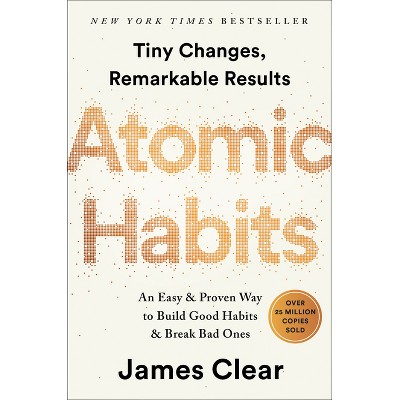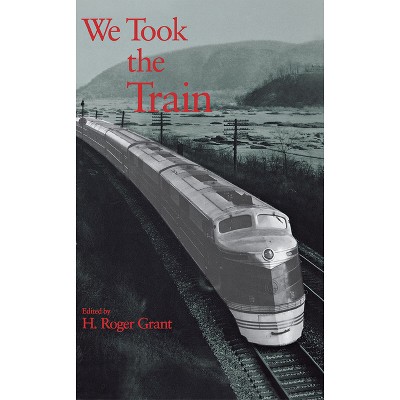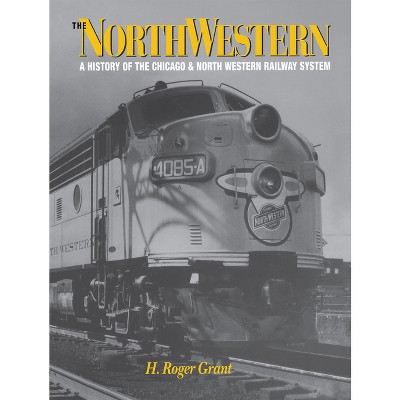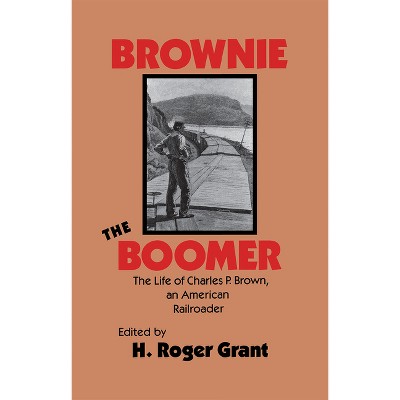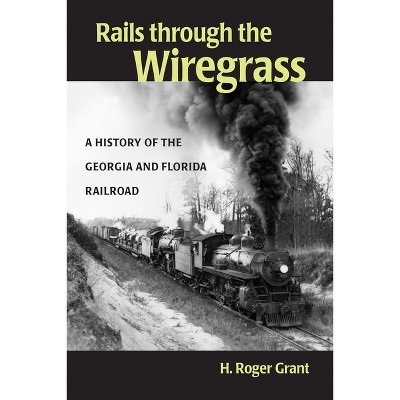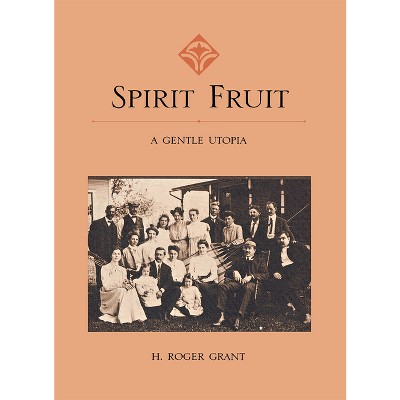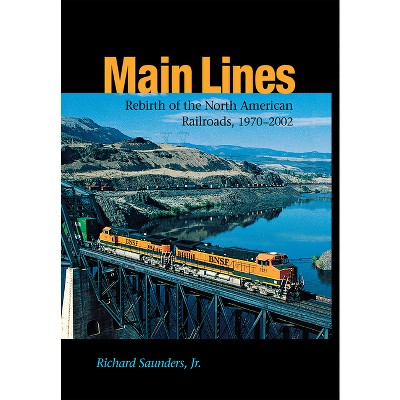Follow the Flag - (Railroads in America) by H Roger Grant (Hardcover)

About this item
Highlights
- "Follow the Flag" offers the first authoritative history of the Wabash Railroad Company, a once vital interregional carrier.
- About the Author: H. Roger Grant is the Centennial Professor of History at Clemson University.
- 304 Pages
- Transportation, Railroads
- Series Name: Railroads in America
Description
About the Book
"Follow the Flag" offers the first authoritative history of the Wabash Railroad Company, a once vital interregional carrier. The corporate saga of the Wabash involved the efforts of strong-willed and creative leaders, but this book provides more than traditional business history. Noted transportation historian H. Roger Grant captures the human side of the Wabash, ranging from the medical doctors who created an effective hospital department to the worker-sponsored social events. And Grant has not ignored the impact the Wabash had on businesses and communities in the "Heart of America."
Like most major American carriers, the Wabash grew out of an assortment of small firms, including the first railroad to operate in Illinois, the Northern Cross. Thanks in part to the genius of financier Jay Gould, by the early 1880s what was then known as the Wabash, St. Louis & Pacific Railway reached the principal gateways of Chicago, Des Moines, Detroit, Kansas City, and St. Louis. In the 1890s, the Wabash gained access to Buffalo and direct connections to Boston and New York City. One extension, spearheaded by Gould's eldest son, George, fizzled. In 1904 entry into Pittsburgh caused financial turmoil, ultimately throwing the Wabash into receivership. A subsequent reorganization allowed the Wabash to become an important carrier during the go-go years of the 1920s and permitted the company to take control of a strategic "bridge" property, the Ann Arbor Railroad. The Great Depression forced the company into another receivership, but an effective reorganization during the early days of World War II gave rise to a generally robust road. Its famed Blue Bird streamliner, introduced in 1950 between Chicago and St. Louis, became a widely recognized symbol of the "New Wabash." When "merger madness" swept the railroad industry in the 1960s, the Wabash, along with the Nickel Plate Road, joined the prosperous Norfolk & Western Railway, a merger that worked well for all three carriers. Immortalized in the popular folk song "Wabash Cannonball," the midwestern railroad has left important legacies. Today, forty years after becoming a "fallen flag" carrier, key components of the former Wabash remain busy rail arteries and terminals, attesting to its historic value to American transportation.Book Synopsis
"Follow the Flag" offers the first authoritative history of the Wabash Railroad Company, a once vital interregional carrier. The corporate saga of the Wabash involved the efforts of strong-willed and creative leaders, but this book provides more than traditional business history. Noted transportation historian H. Roger Grant captures the human side of the Wabash, ranging from the medical doctors who created an effective hospital department to the worker-sponsored social events. And Grant has not ignored the impact the Wabash had on businesses and communities in the "Heart of America."
Like most major American carriers, the Wabash grew out of an assortment of small firms, including the first railroad to operate in Illinois, the Northern Cross. Thanks in part to the genius of financier Jay Gould, by the early 1880s what was then known as the Wabash, St. Louis & Pacific Railway reached the principal gateways of Chicago, Des Moines, Detroit, Kansas City, and St. Louis. In the 1890s, the Wabash gained access to Buffalo and direct connections to Boston and New York City.
One extension, spearheaded by Gould's eldest son, George, fizzled. In 1904 entry into Pittsburgh caused financial turmoil, ultimately throwing the Wabash into receivership. A subsequent reorganization allowed the Wabash to become an important carrier during the go-go years of the 1920s and permitted the company to take control of a strategic "bridge" property, the Ann Arbor Railroad.
The Great Depression forced the company into another receivership, but an effective reorganization during the early days of World War II gave rise to a generally robust road. Its famed Blue Bird streamliner, introduced in 1950 between Chicago and St. Louis, became a widely recognized symbol of the "New Wabash." When "merger madness" swept the railroad industry in the 1960s, the Wabash, along with the Nickel Plate Road, joined the prosperous Norfolk & Western Railway, a merger that worked well for all three carriers.
Immortalized in the popular folk song "Wabash Cannonball," the midwestern railroad has left important legacies. Today, forty years after becoming a "fallen flag" carrier, key components of the former Wabash remain busy rail arteries and terminals, attesting to its historic value to American transportation.
Review Quotes
"Follow the Flag" reaffirms Roger Grant's status as one of the preeminent historians of transportation in the United States.... One of the great strengths of the book is that the author was able to write such a detailed and balanced history even though most of the Wabash's corporate records have long since vanished.... Rail fans surely will love this book. Academic historians will appreciate the effective use of sources, the compilation of information on a significant American railroad, and above all, the lucid exposition of a precedent-setting transportation firm whose activities reverberated throughout the government, the business realm, and local communities.
-- "Enterprise & Society"A major contribution to our understanding of American railroad development.... Grant unfolds the Wabash's dense history with his customary professionalism and close attention to detail. His work has always been distinguished by a congenial blend of the railroad buff's enthusiasm and the historian's expertise, and this book is no exception. The research is thorough, meticulous, and wide-ranging.... Railroad historians and those interested in American business and economic development will find much to intrigue and inform them.
-- "The Journal of American History"A solid, satisfying work on the Wabash. It is a welcome history of the quintessential midwestern railroad.
-- "Michigan Historical Review"A well-written, in-depth history of the railroad.
-- "Trains Magazine"One of the best in the genre of traditional corporate history. For historians of transportation, business, labor, or even medicine, there is much to recommend it. Extensively researched and fully documented, it stands as a model of scholarship. If only we had histories of the several dozen other major U.S. railroads that were as good as this one.
-- "Technology and Culture"About the Author
H. Roger Grant is the Centennial Professor of History at Clemson University. One of America's leading railroad historians, he is author of numerous books on railroad history, including The North Western and The Corn Belt Route.



